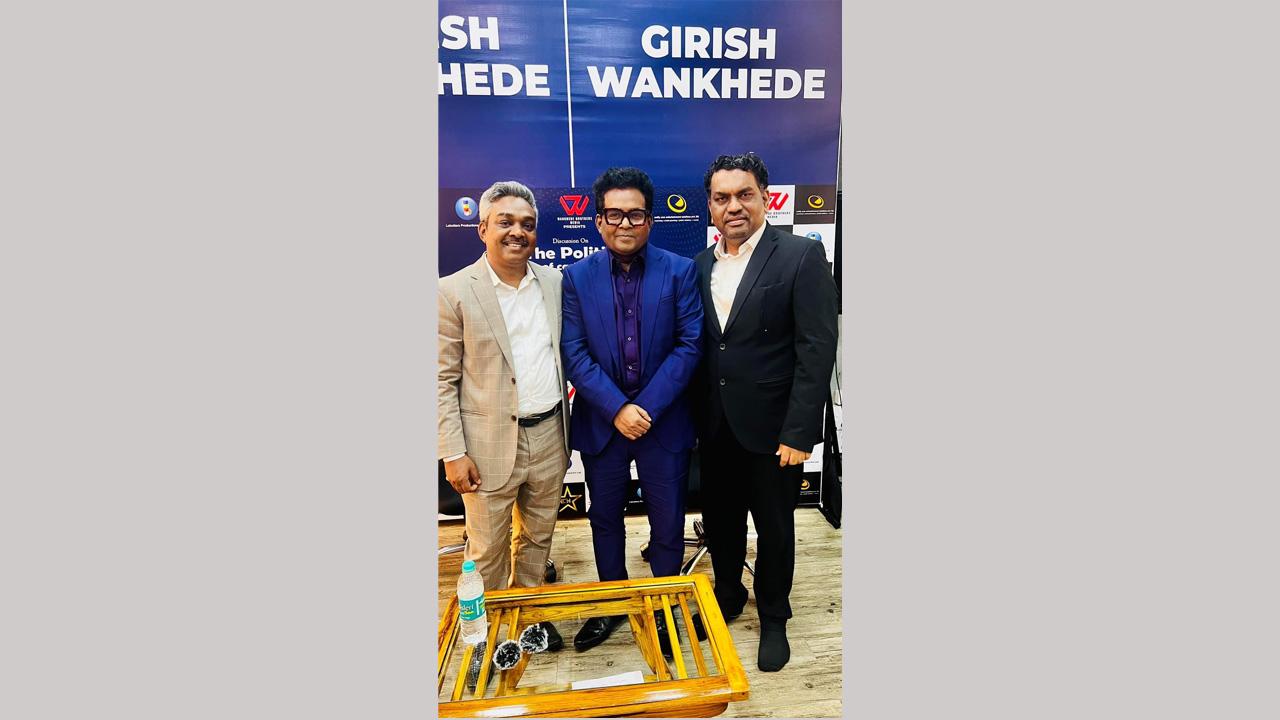Wankhede Brothers Media

Wankhede Brothers
ADVERTISEMENT
Wankhede Brothers Media latest talk show is making quite a buzz. The key host of the event, Girish Wankhede, a well-known film trade analyst and cinema reviewer, invites influencers, artists and intellectuals to discuss themes and problems associated with art, culture, entertainment industry and of course Bollywood. In the latest episode that telecasted on various online news portals, including Hunch Media, Girish Wankhede invited Dr. Harish Wankhede, faculty at the Center for Political Science in Jawaharlal Nehru university to discuss on a very crucial topic of ‘Caste Politics in Indian Cinema’.
There is a growing literature that discusses the absence or stereotypical presence of the Dalits and other lower caste identities on the silver screen. It is only in the recent past that films in India have provided some recognizable space to the lower caste identities on screen and has made films around caste issues and Dalit concerns. Harish Wankhede has been contributing immensely on this topic and his research and review articles are published in finest international academic journals and national dailies. Noting this new exciting development, it was prudent for Girish Wankhede to call him for a long discussion and analyze the caste question in Indian cinema.

Girish Wankhede opened the discussion by showcasing how the idea of ‘plurality’ has impacted the global entertainment Industry, especially in Hollywood, and has made film industry more democratic and plural. He presented various examples demonstrating how the American cinema has started acknowledging the presence of Black artists and started making films that reflects upon the problems of the black population. Further he provided a long list of films and artists that has contributed in making the global cinema more heterogeneous that often speaks about vulnerable people, queer groups and socially marginalized communities.
For Girish’s surprise, he noted that Indian cinema lacks such dynamic development and suggests that there are only handful of the socially responsible cinema that can narrate the stories and experiences of people belonged to lower social strata, especially the Dalits and the Adivasi’s.
Harish Wankhede in his response endorsed Girish’s observation and adds a new perspective to the debate. He argued that in the post-1990s, there is a visible change in the portrayal of Dalit as Dalits characters are now emerging as the mainstream heroes on the screen. He observed that the filmmakers, producers and artists coming from the socially marginalized communities are more interested in changing the popular ‘entertaining’ texture of cinema and has added more realism and social sensitivity to the film narratives. Both agreed that film directors like Pa Ranjith, Vetrimaaran, Mari Selvaraj, Neeraj Neeraj Ghaywan and Nagaraj Manjule are the poster boys of the new Dalit genre and it would bring a dynamic change in the history of cinema.
Girish in his concluding remarks offered that the cinema business is open for all as a lot many artists and filmmakers from the Dalits and other socially marginalized background are already making big inroads in Bombay film industry and are playing influential roles. He suggested that more films and stories around Dalit identity would surely open a parallel stream that can be compared to the Black Cinema of Hollywood.
The final part was the question from the audience round in which many and cinema lovers and artists participated and made the discussion livelier. Dr. Vijay Kadam introduced both the discussants and also offered a vote of thanks.
 Subscribe today by clicking the link and stay updated with the latest news!" Click here!
Subscribe today by clicking the link and stay updated with the latest news!" Click here!







